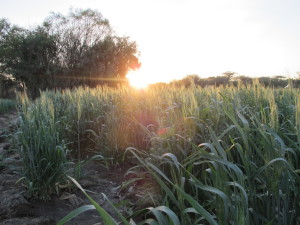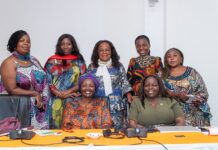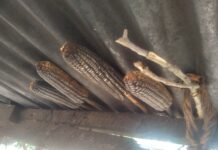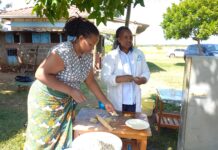By Jessica Summers
A brand new soil fertility mapping project – the first of its kind in Africa – is underway in Ethiopia. Extensive information about Ethiopia’s landscape and agricultural land will ensure soils are properly maintained to feed plants and thereby the population for generations to come. EthioSIS – which stands for Ethiopian Soil Information System- is expected to be complete in 2016. Cutting-edge digital technology will allow for up-to-date information on different soil characteristics and nutrient needs – essential for effective and sustainable agriculture – to be recorded, accessed and utilized for balanced fertilisation; much needed in this agriculturally-reliant economy.

Speaking at an International Potash Institute (IPI) symposium held at Hawassa University in the Southern Nations, Nationalities, and Peoples’ Regional State (SNNPRS), Dr GidenaTasew from Mekele Soil Research Centre explained that: “Historically Ethiopian soils were believed to contain certain nutrients that were actually deficient – in particular, potassium. This is changing as researchers in the country pioneer this digital soil fertility mapping project.”
Did you know that 43% of agricultural land in Ethiopia’s three major regions – Amhara, Oromia and SNNPRS -is affected by acidity? This means that the natural process whereby crops can mature into healthy, nutritious and edible food is prevented. On top of this, about 1 million hectares of potentially fertile valley land is affected by too much salt; and,of the12 million hectares (the size of 12 million football pitches) of dark coloured, nutrient-rich soils– called Vertisols – (about 7 million hectares of which are situated in the highlands)are affected by water logging.
Professor Tekalign Mamo, program leader, EthioSIS describes why this is important:“Understanding and considering the great risks world soils are facing has received a boost in this year’s International Year of Soils as declared by the United Nations. Crucially, EthioSIS will drive a better fertiliser approach than in the past. In some other parts of the world, particularly in developed countries, fertilisers are tailored to the needs of the soil. Just like it is important to ensure growing children receive a healthy diet, nutrition must start in the food we grow – in soils – in the form of balanced fertilisation. Unfortunately, this has not been the case in many countries in Africa.”

Mr Tegbaru Bellete, senior project officer at the Ethiopian Transformation Agency (ATA) talked about some of the impacts of digital soil fertility mapping:“I’m excited because different African countries are coming to Ethiopia to learn from experiences of the EthioSIS project. We are using state-of-the-art technology, which in time will give farmers an advisory service for which fertilisers to use.”
“This is truly a game-changer to science, policymakers and the private sector. We have never seen anything like this project in Africa and we are impressed by this innovative Ethiopian-led initiative.Nowhere have we seen, in such a short time, that soil fertility maps have been made and presented. It’s a project we have not seen before.” Said Hillel Magen, director of Switzerland-based IPI, an expert with over 30 years’ experience in Asia and South America.
Although EthioSIS is the result of the federal government’s own initiative, it has received technical and financial contributions from numerous private, public and governmental organizations, such as: OCP—the Moroccan Phosphate company, ICL, Africa Soil Information Service (AfSIS), CASCAPE—a project financed by the Dutch Government and Wageningen University. ATA, the institution coordinating the project, plans to transition the project to the Ministry of Agriculture and Natural Resources (MoANR) as a permanent program.
After EthioSIS was launched in 2012, two new directorates – Soil Fertility and Soil Information – have been established under the ministry. Since soil processes are dynamic and the fertility status may change with time, periodic soil fertility assessments and updating digital soil fertility mapping will hence continue under the MoANR, and the national soil information database and fertilizer recommendations will be updated accordingly.














